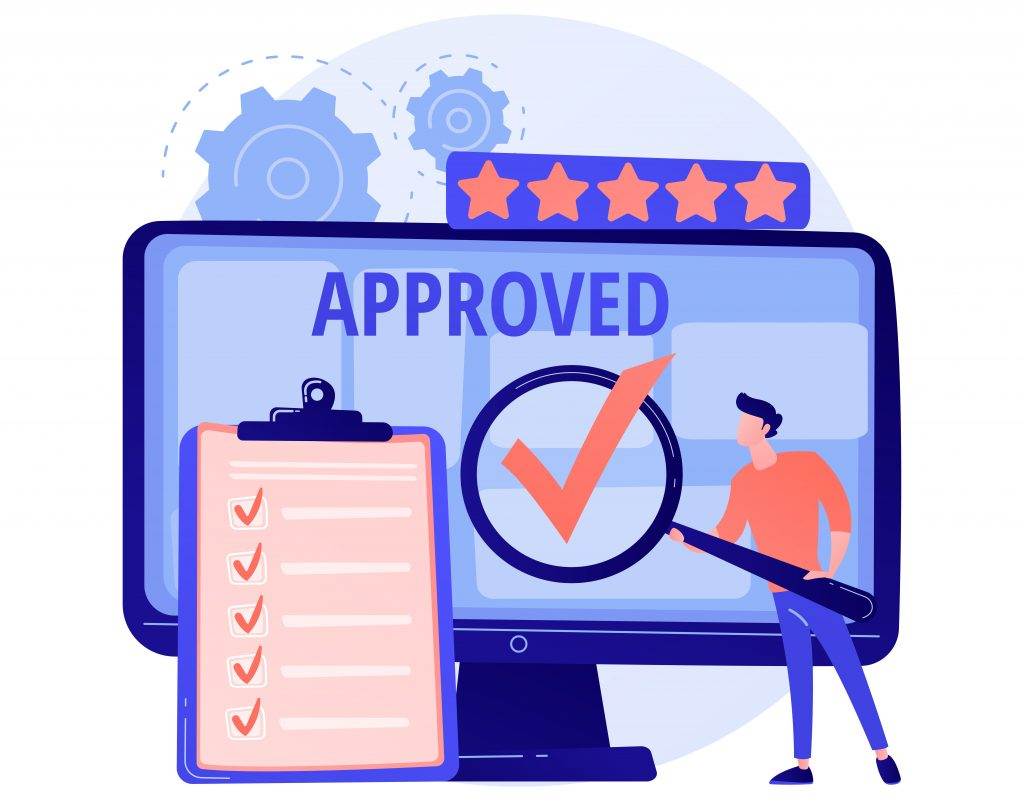Transform Your Practice's Billing Efficiency
Achieve Seamless Integration, Maximize Payment Collections, and Reduce Denial Rates with eMedicalPractice
Transform Your Practice’s Financial Health with Our Integrated Medical Billing Solution
Understanding the vital role medical billing plays in your practice’s financial health, our software offers seamless integration with your EHR, practice management system, and clearinghouses to meet all your billing requirements. At eMedicalPractice, we’re committed to being your strategic partner in enhancing payment collection, reducing denial rates, and improving clean claims rates. Streamline your billing process with our efficient system and take control of your financial health today.
Automated Claims Processing
Say goodbye to tedious manual claim submissions. Our billing solutions automate the claims processing workflow, reducing errors and ensuring faster payment turnaround times. With electronic claim submission and tracking, you can keep an eye on the status of your claims in real-time, minimizing claim denials and maximizing reimbursement.
Key Benefits of Automated Claims Processing:
- Time-saving and Efficiency
- Error Reduction and Clean Claims
- Real-time Claim Tracking
- Faster Reimbursement
- Improved Revenue Cycle Management


Revenue Cycle Management
We provide end-to-end revenue cycle management solutions that enable you to track and manage the financial health of your practice. From patient registration and verification to coding, billing, and payment posting, our comprehensive system streamlines the entire revenue cycle, saving you time and effort.
Key Components of Revenue Cycle Management:
- Patient Registration
- Claims Submission
- Claims Processing and Adjudication
- Denial Management
- Payment Posting
- Patient Billing and Collection
Benefits of Effective Revenue Cycle Management
1. Increased Revenue: Efficient revenue cycle management helps optimize reimbursement by reducing claim denials, minimizing payment delays, and improving collection rates, ultimately increasing the overall revenue of the healthcare organization.
2. Improved Cash Flow: By streamlining the billing and reimbursement process, healthcare organizations can speed up payment collections, reduce accounts receivable days, and improve cash flow management.
3. Enhanced Patient Experience: Well-managed revenue cycles result in accurate and timely patient bills, transparent insurance explanations, and seamless payment processes. This leads to improved patient satisfaction and reduces potential friction between patients and healthcare providers.
4. Regulatory Compliance: Effective revenue cycle management ensures adherence to coding and billing regulations, reducing the risk of audits, penalties, and legal issues associated with non-compliance.
5. Operational Efficiency: Streamlining the revenue cycle processes through automation and integration improves operational efficiency, reduces manual errors, and eliminates administrative burdens. This allows staff to focus on delivering quality patient care instead of getting bogged down by administrative tasks.
Implementing a comprehensive revenue cycle management strategy, supported by advanced technology and experienced professionals, is essential for the financial success of any healthcare organization. By effectively managing each step of the revenue cycle, healthcare providers can optimize their revenue, improve cash flow, and ensure a positive patient experience.
Real-time Eligibility Verification
Avoid surprises by verifying patient eligibility and insurance coverage in real-time. Our billing solutions integrate with insurance databases, allowing you to instantly check if patients are covered, verify co-pays, deductibles, and more. This eliminates the risk of rendering services to patients with expired or invalid insurance, reducing claim rejections and improving collections.
Key aspects of real-time eligibility verification include:
- Insurance Coverage Verification
- Benefits and Co-pay Information
- Service Authorization
- Timely and Accurate Information

Benefits of Real-Time Eligibility Verification
1. Enhanced Patient Experience: By verifying insurance coverage in real-time, patients can receive accurate information about their benefits, co-pays, and out-of-pocket expenses before undergoing any services. This transparency helps patients make informed decisions and reduces surprise billing, resulting in a better overall patient experience.
2. Reduced Financial Risk: Real-time eligibility verification helps healthcare providers identify patients who may have coverage limitations or inadequate insurance. This allows providers to discuss alternative payment options or additional coverage options with the patient upfront, reducing financial risks associated with denied claims or unpaid services.
3. Streamlined Workflow: Automating the eligibility verification process through real-time electronic systems helps streamline administrative workflows for healthcare providers. It eliminates the need to manually verify insurance coverage, reduces paperwork, and minimizes errors associated with manual data entry.
4. Increased Efficiency: Real-time eligibility verification saves time for both patients and providers by providing immediate responses regarding coverage details. Providers can determine whether a patient qualifies for specific services without delay, allowing efficient scheduling and planning of care.
5. Improved Revenue Cycle Management: By verifying insurance coverage in real-time, providers can ensure accurate billing and claims submission. This minimizes claim denials, improves reimbursement rates, and speeds up the revenue cycle, leading to improved financial performance.
Real-time eligibility verification is a valuable tool for healthcare organizations to verify insurance coverage, obtain accurate benefit information, and reduce financial risks associated with claims denials. By leveraging technology and automation, healthcare providers can enhance the patient experience, improve revenue cycle management, and optimize overall operational efficiency.

Seamless Integration
Our billing solutions seamlessly integrate with popular EHR platforms, eliminating the need for duplicate data entry and ensuring accurate and up-to-date patient information. With consolidated data across your EHR and billing systems, you can efficiently manage patient records, capture charges, and generate clean claims.
Key aspects of seamless integration include:
- Interoperability
- Data Synchronization
- Automated Workflows
- Scalability and Flexibility
- Security and Data Protection
Benefits of Seamless Integration
1. Improved Efficiency: Seamless integration eliminates duplicate data entry and reduces manual errors, leading to improved operational efficiency. It streamlines workflows, automates processes, and enables the seamless exchange of data, enabling organizations to save time and resources.
2. Enhanced Customer Experience: Integration enables organizations to provide a seamless and consistent experience to customers across different touchpoints. For example, integrating customer relationship management (CRM) systems with sales and marketing tools can provide a holistic view of customer interactions, allowing personalized and targeted communication.
3. Better Decision-Making: Integrating data from various sources and systems allows organizations to have a unified and comprehensive view of their operations. This enables better data analysis, reporting, and decision-making, as insights can be derived from a complete and accurate data set.
4. Increased Agility and Adaptability: Seamless integration allows organizations to quickly respond to changes and adapt their systems or processes as needed. It enables the integration of new technologies, applications, or services without disrupting existing operations, facilitating innovation and growth.
5. Cost Savings: Integration reduces the need for manual intervention, eliminates redundant tasks, and improves overall efficiency, resulting in cost savings. It minimizes errors and reduces the risk of data inconsistencies or delays, leading to better resource utilization and financial performance.
Seamless integration plays a crucial role in modern-day businesses, enabling them to streamline operations, enhance customer experiences, and leverage data effectively. By integrating systems, applications, and processes seamlessly, organizations can achieve greater efficiency, agility, and competitiveness in today’s interconnected digital landscape.

Reporting and Analytics
Gain valuable insights into your practice’s financial performance with our robust reporting and analytics tools. Identify reimbursement trends, track key performance indicators, and generate detailed financial reports to make informed business decisions. Our built-in analytics dashboards help you monitor revenue, identify bottlenecks, and optimize your billing processes.
Here are some key aspects of reporting and analytics:
- Data Collection
- Data Analysis
- Visualization
- Key Performance Indicators (KPIs)
- Ad-Hoc Reporting
- Predictive Analytics
- Data-driven Decision Making
- Data Governance

Customer Support
Outstanding customer support is crucial for any business to succeed and retain loyal customers. It involves providing exceptional service, addressing customer needs and concerns promptly, and going above and beyond to exceed their expectations.
Here are some key aspects of outstanding customer support:
- Prompt Responsiveness
- Active Listening
- Knowledge and Expertise
- Personalization
- Problem Resolution
- Proactive Communication
- Continuous Improvement
- Feedback and Follow-up
Overall, outstanding customer support is a combination of prompt responsiveness, active listening, expertise, personalization, effective problem resolution, proactive communication, continuous improvement, positive attitude, going the extra mile, and feedback and follow-up. By focusing on these aspects, businesses can differentiate themselves and build strong customer loyalty and advocacy.